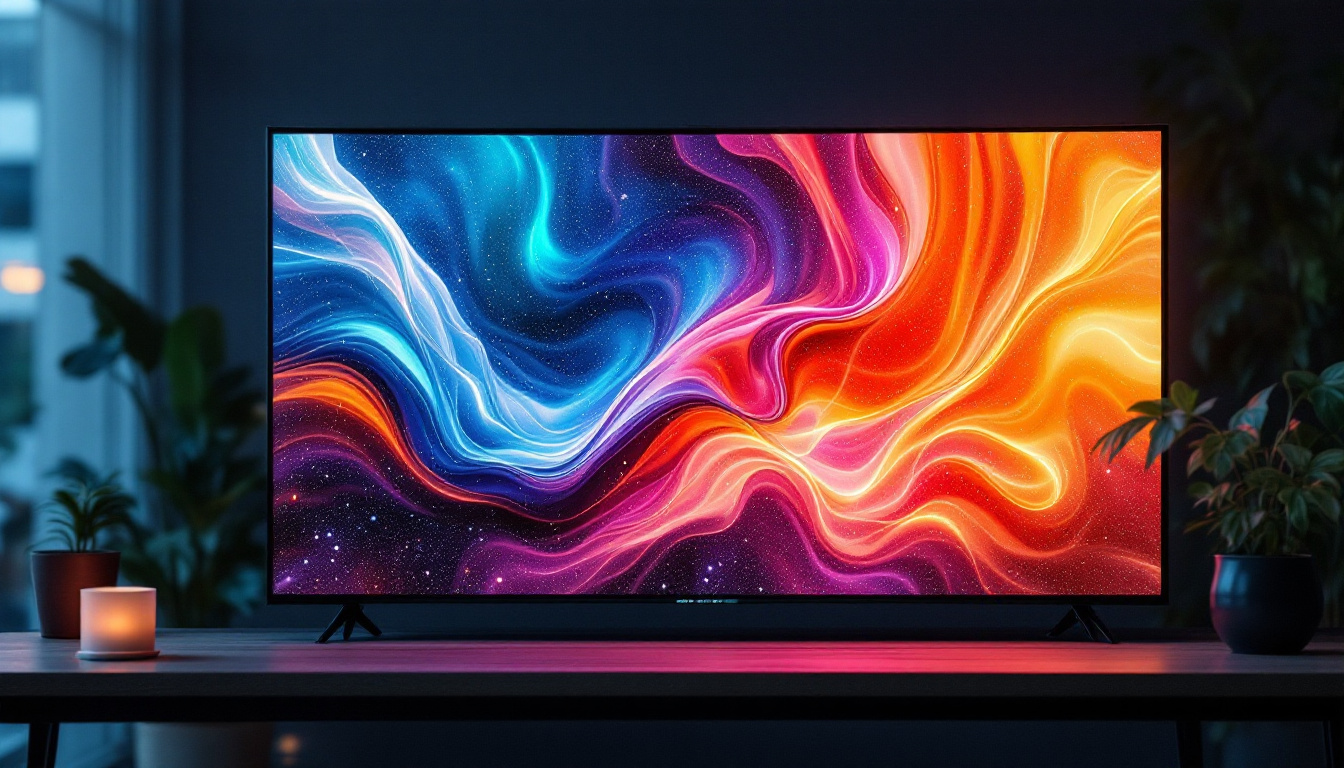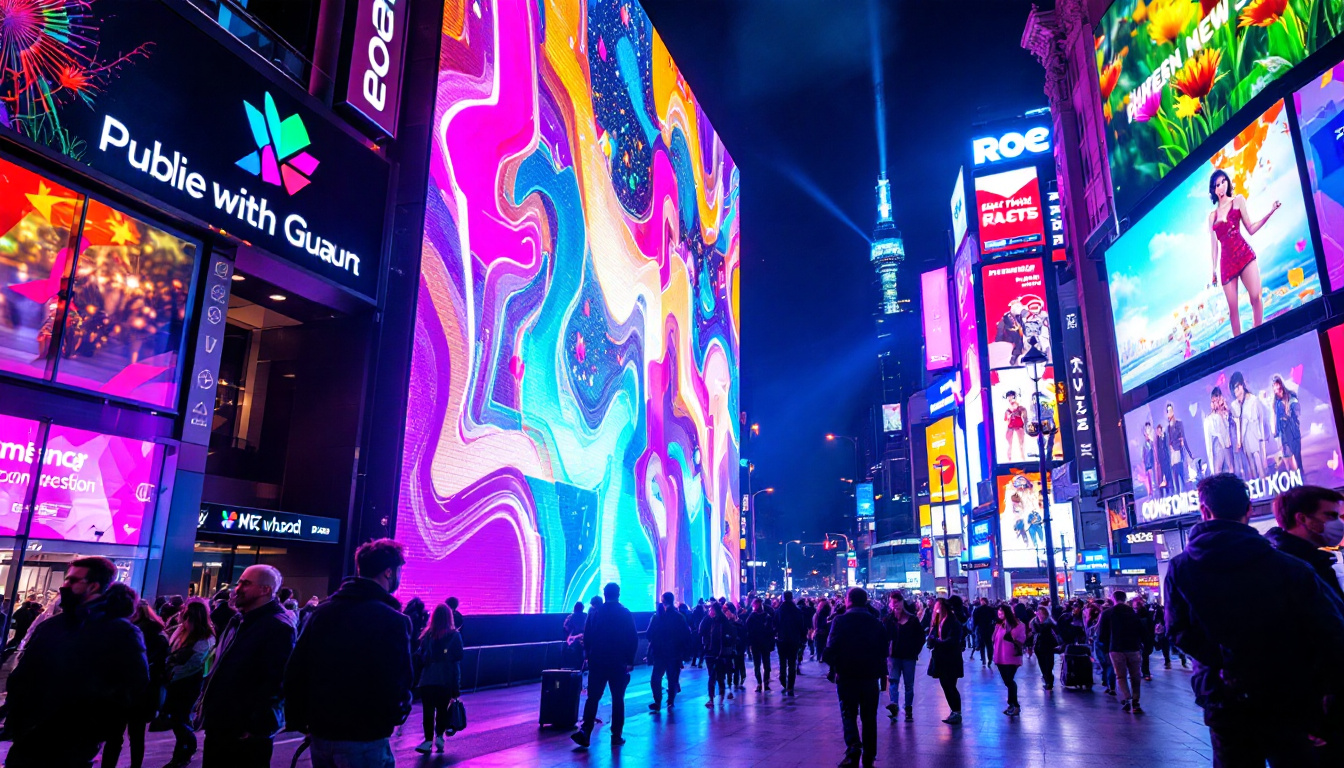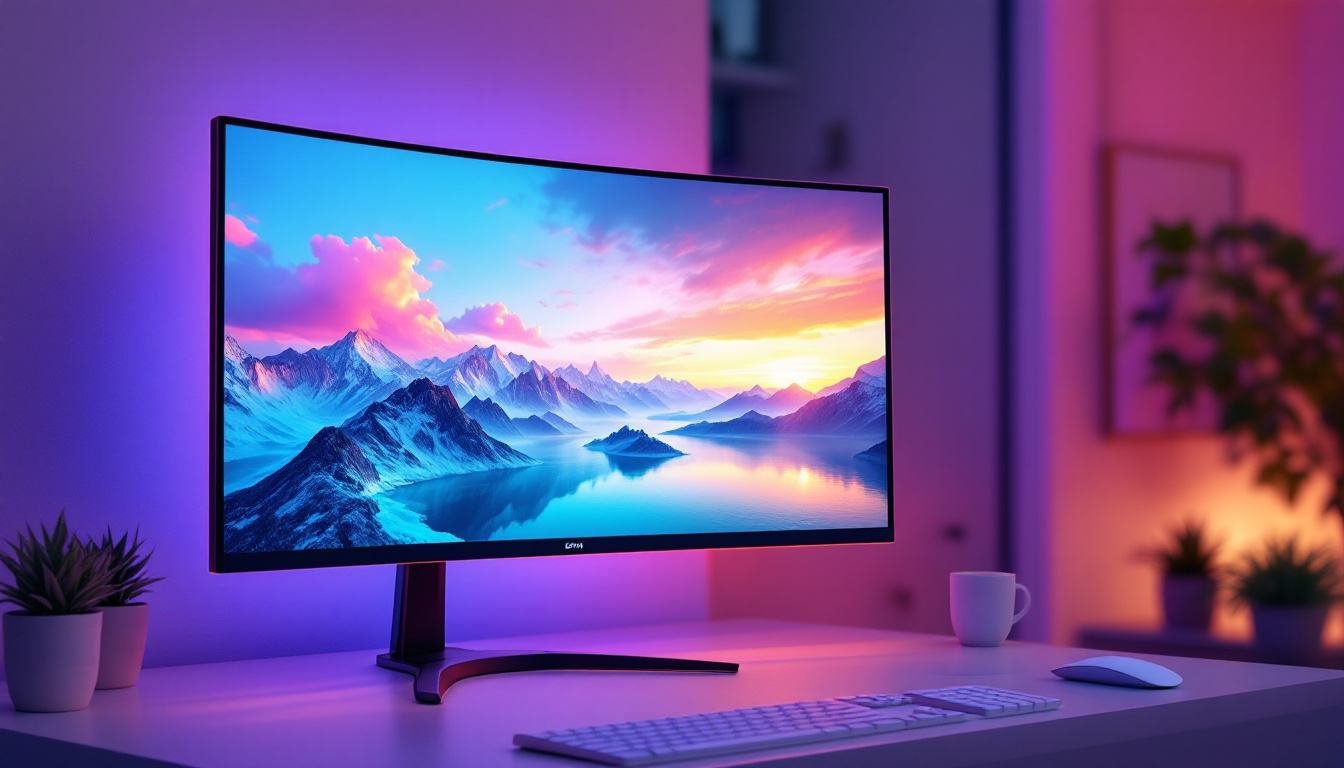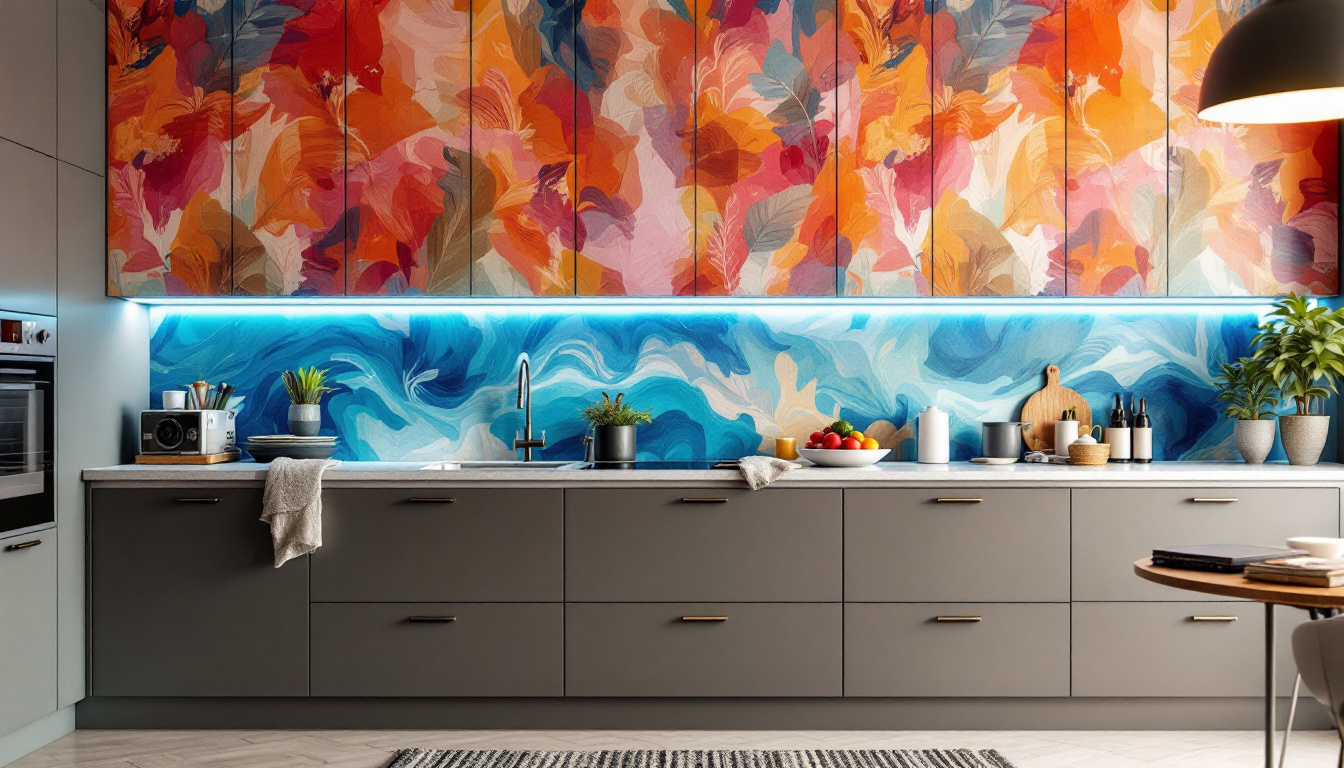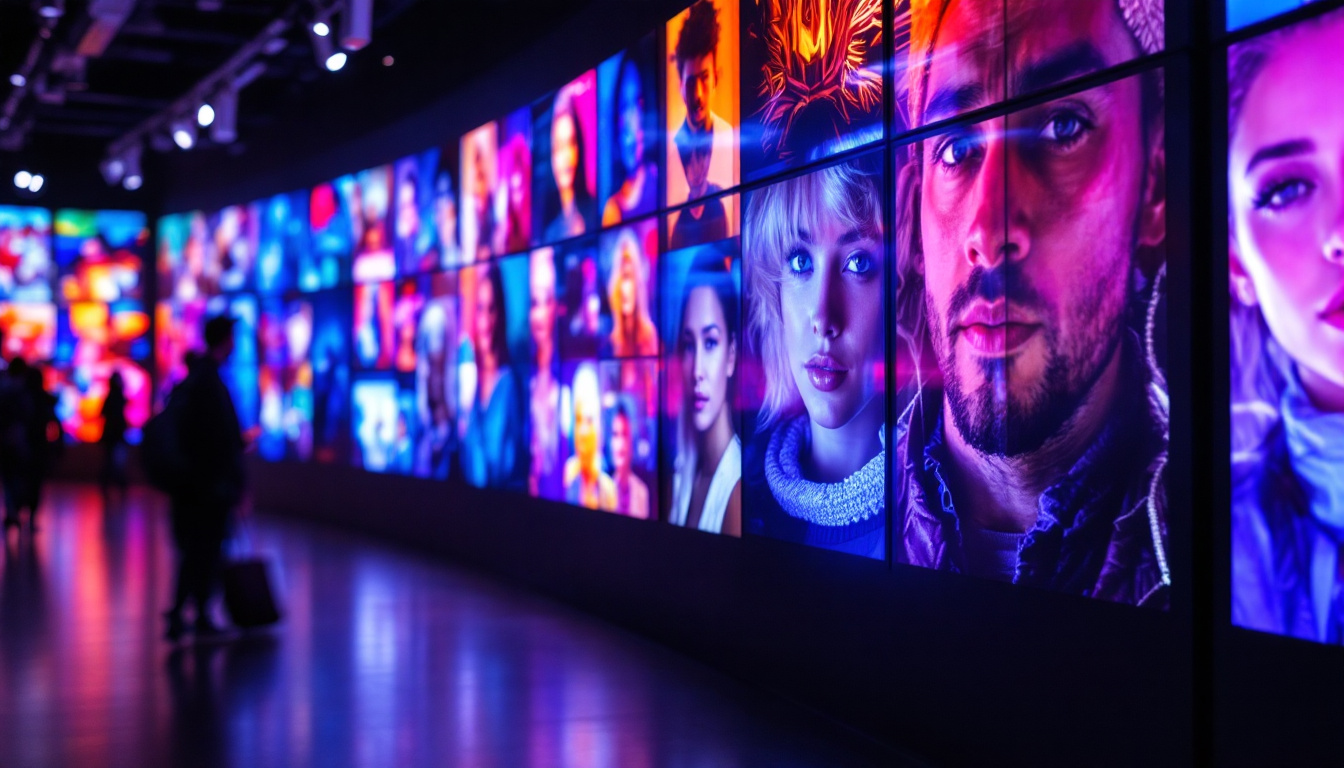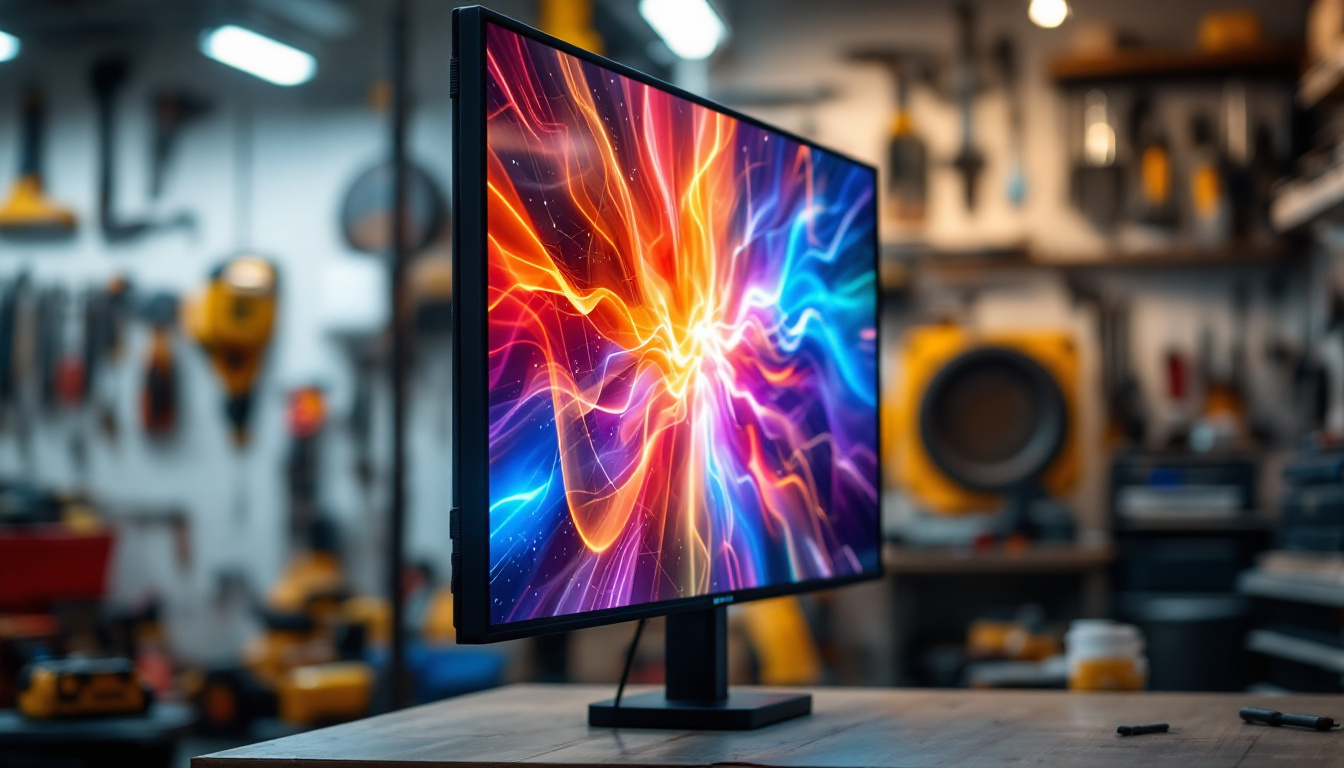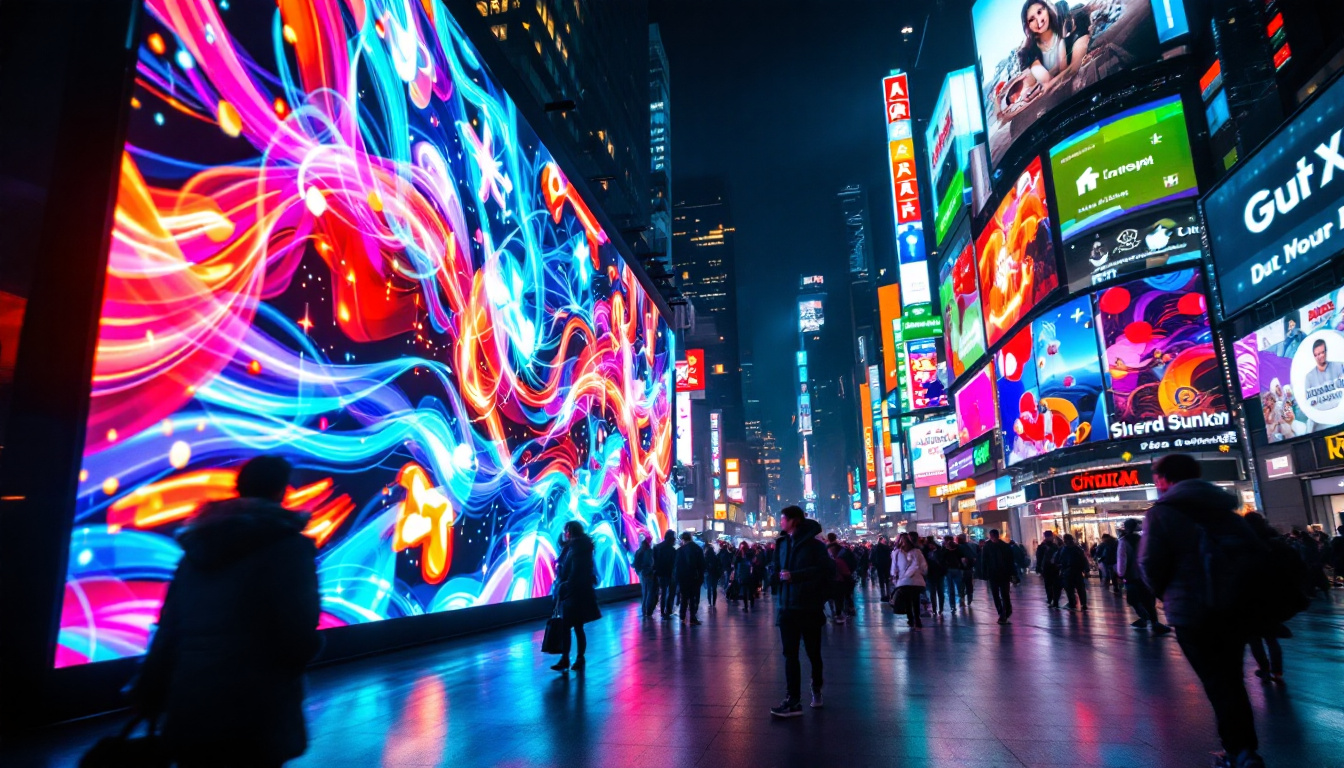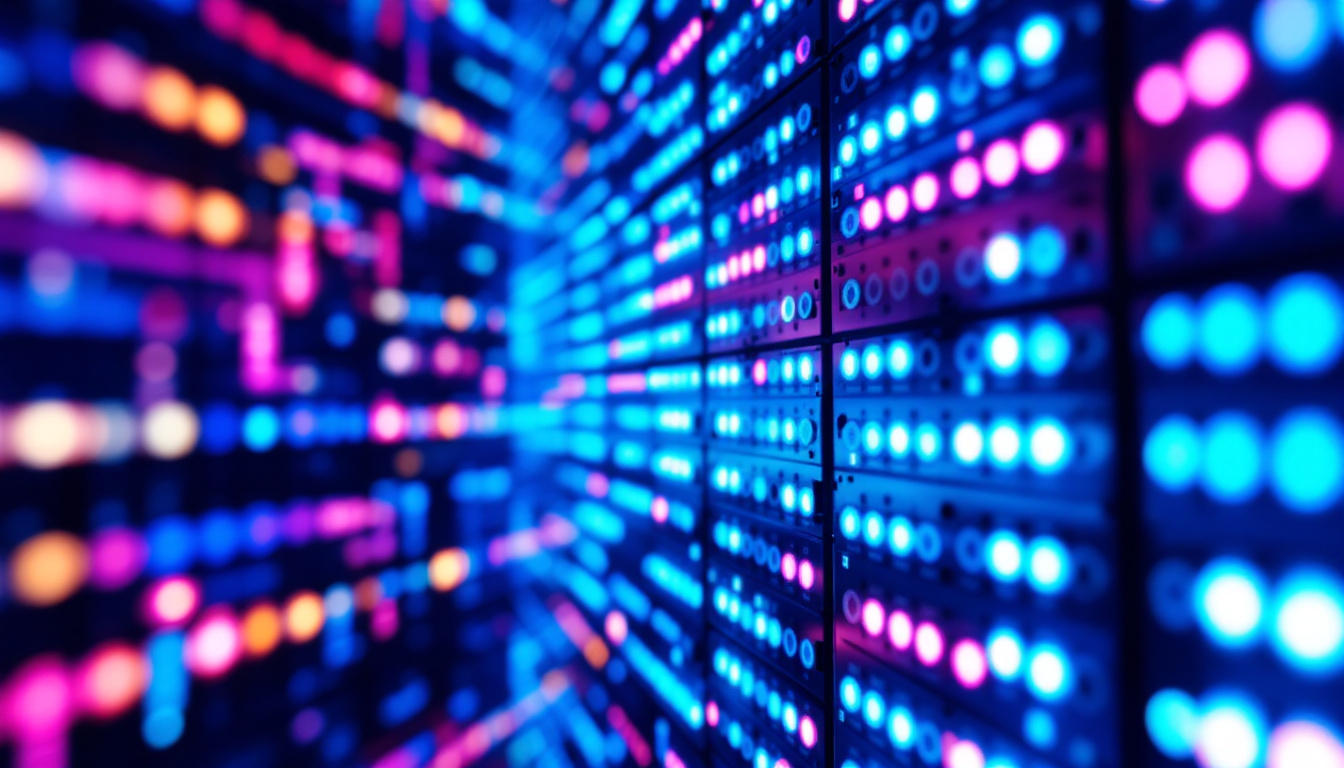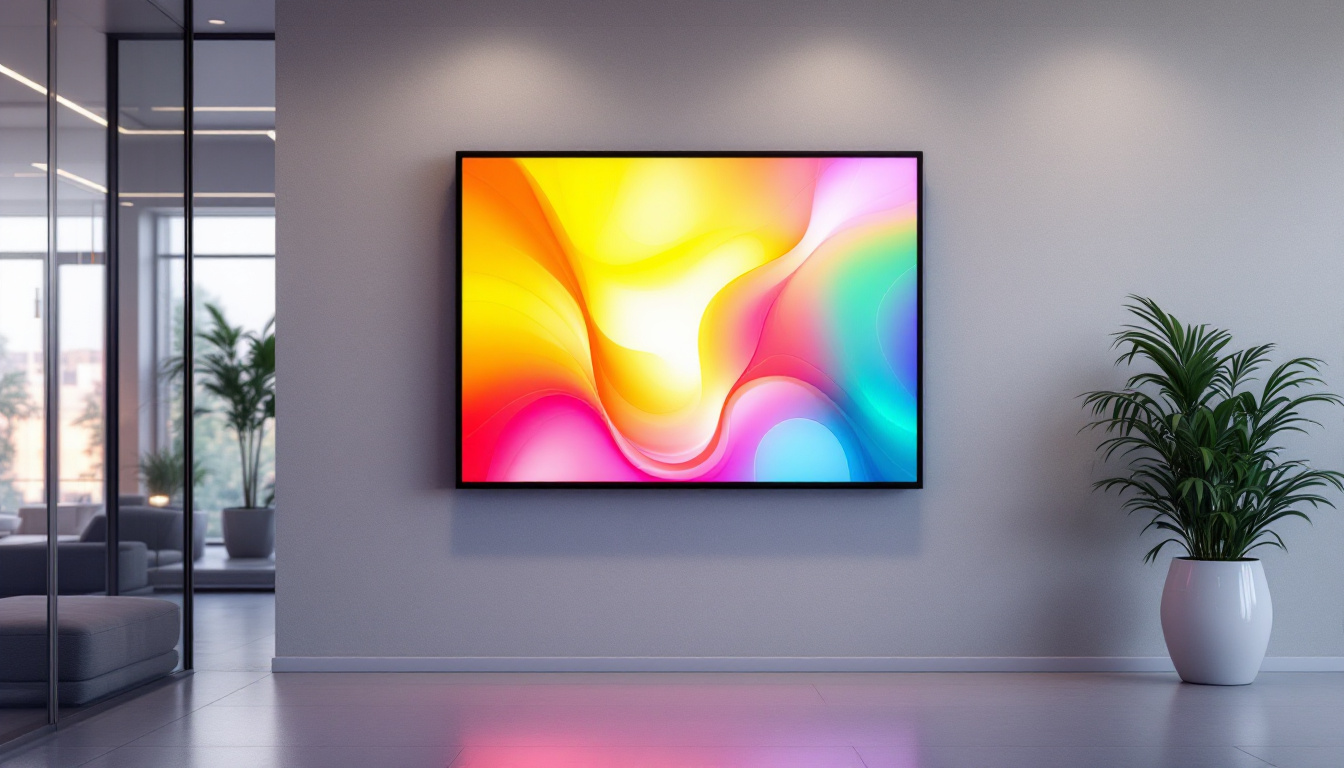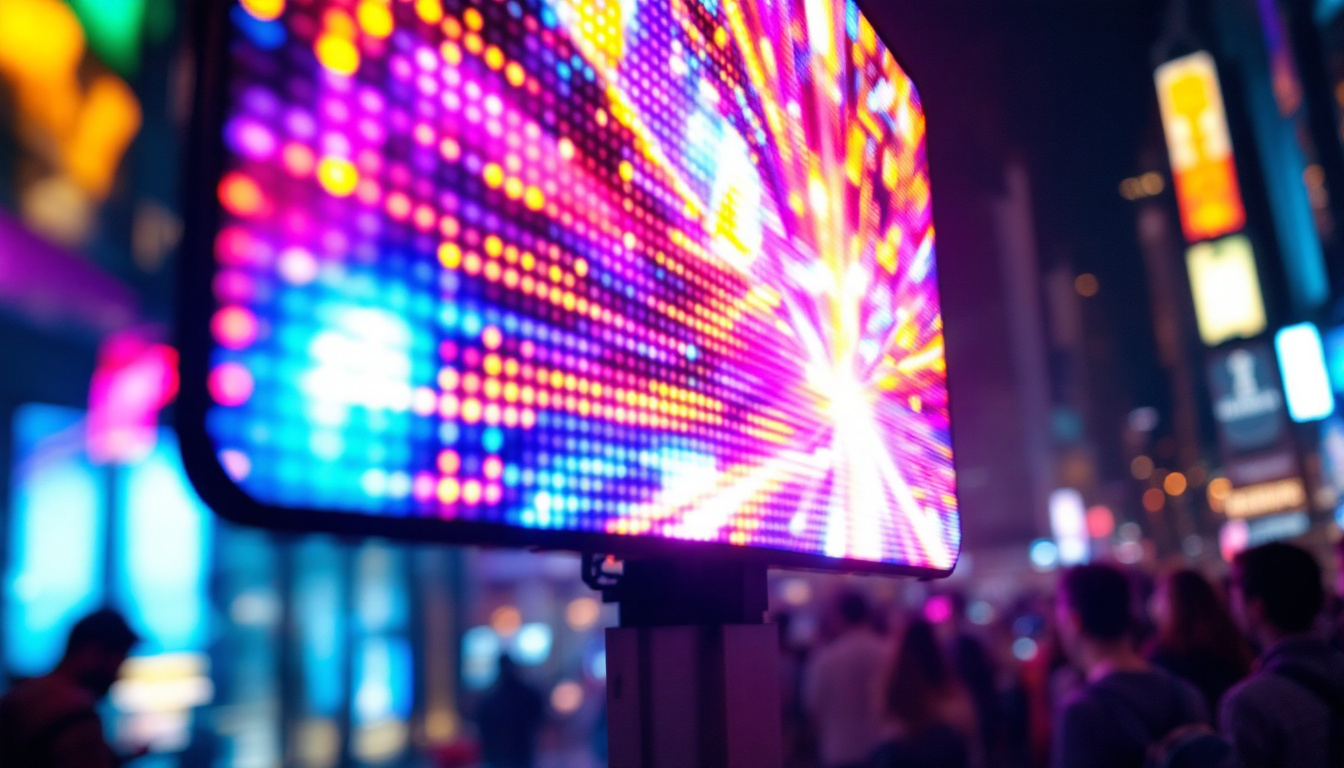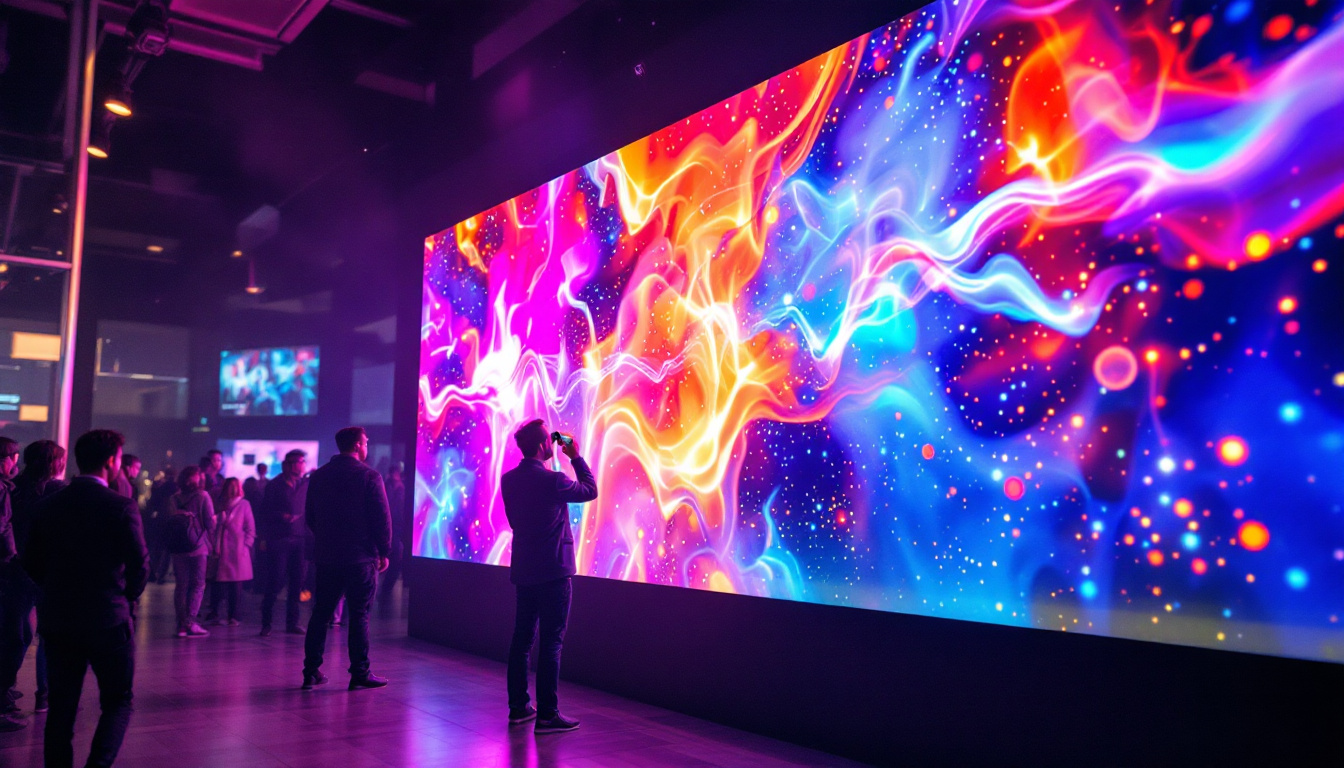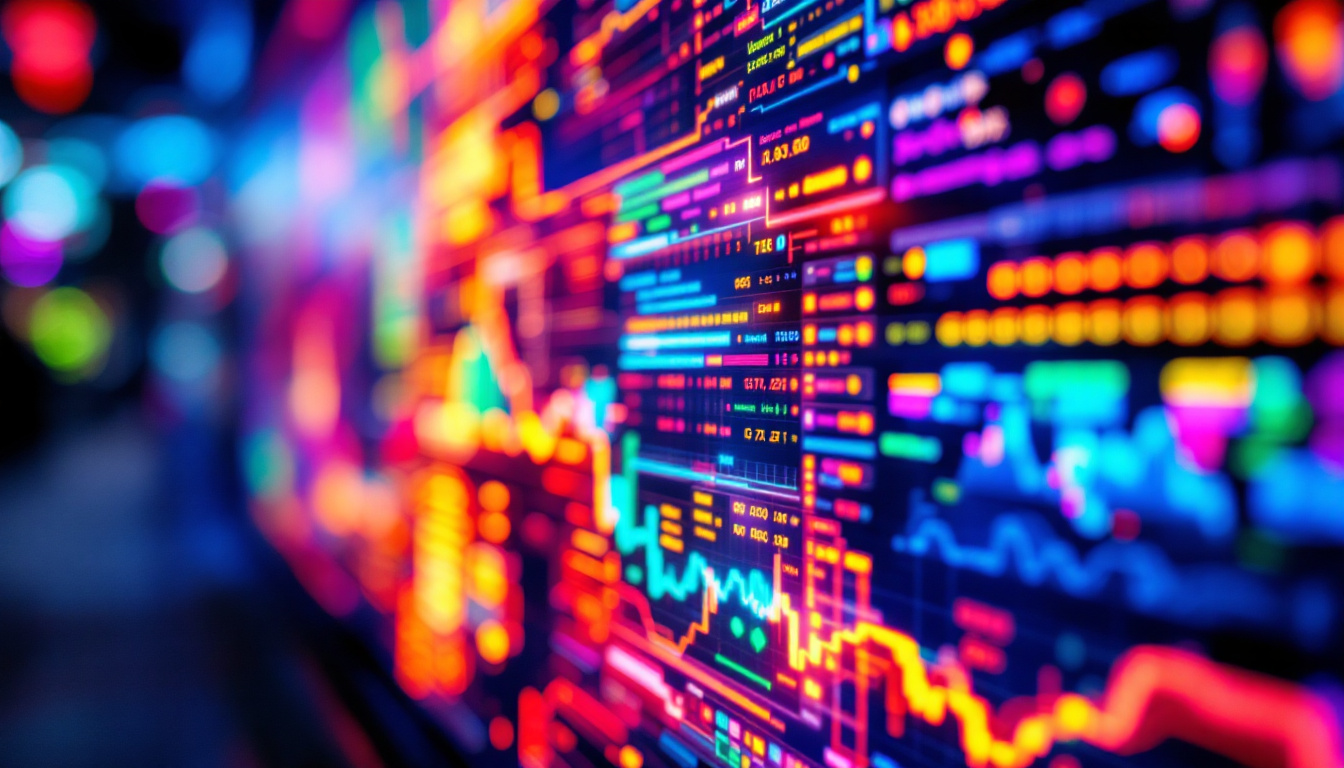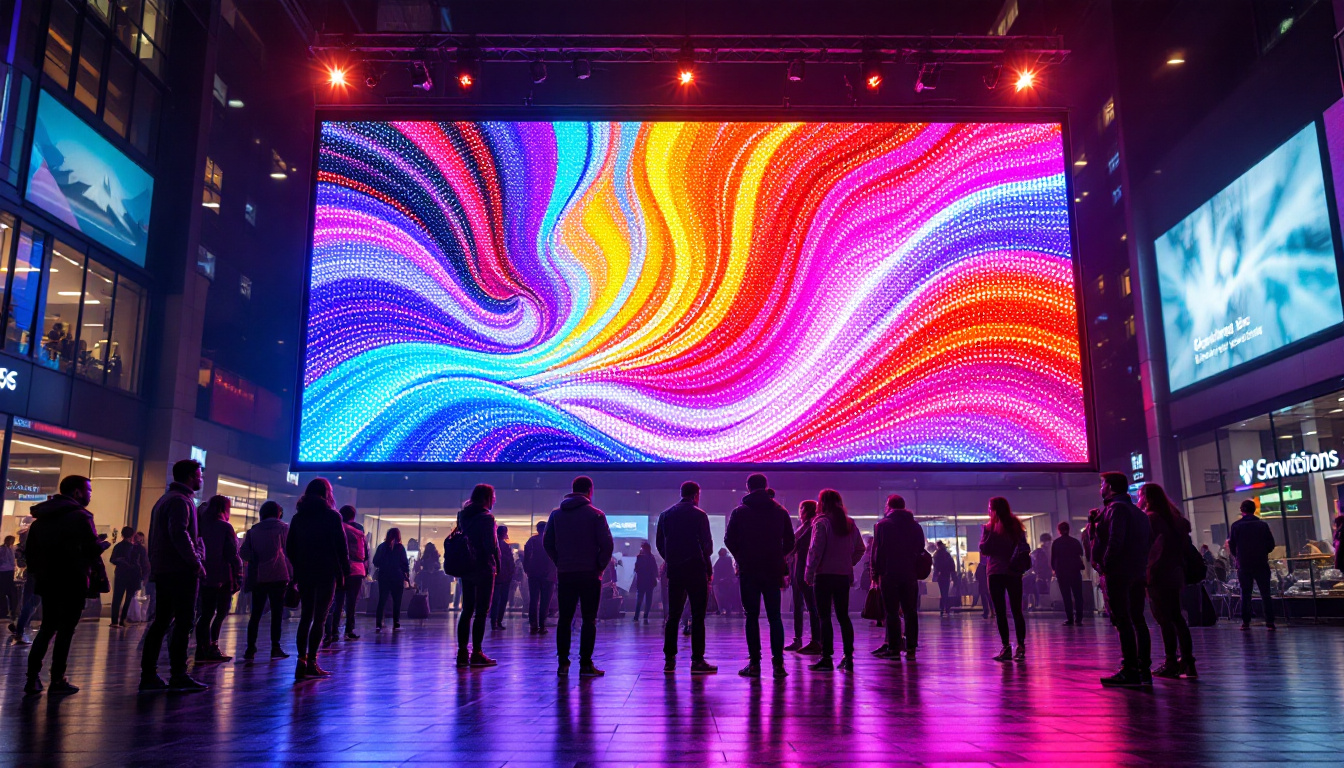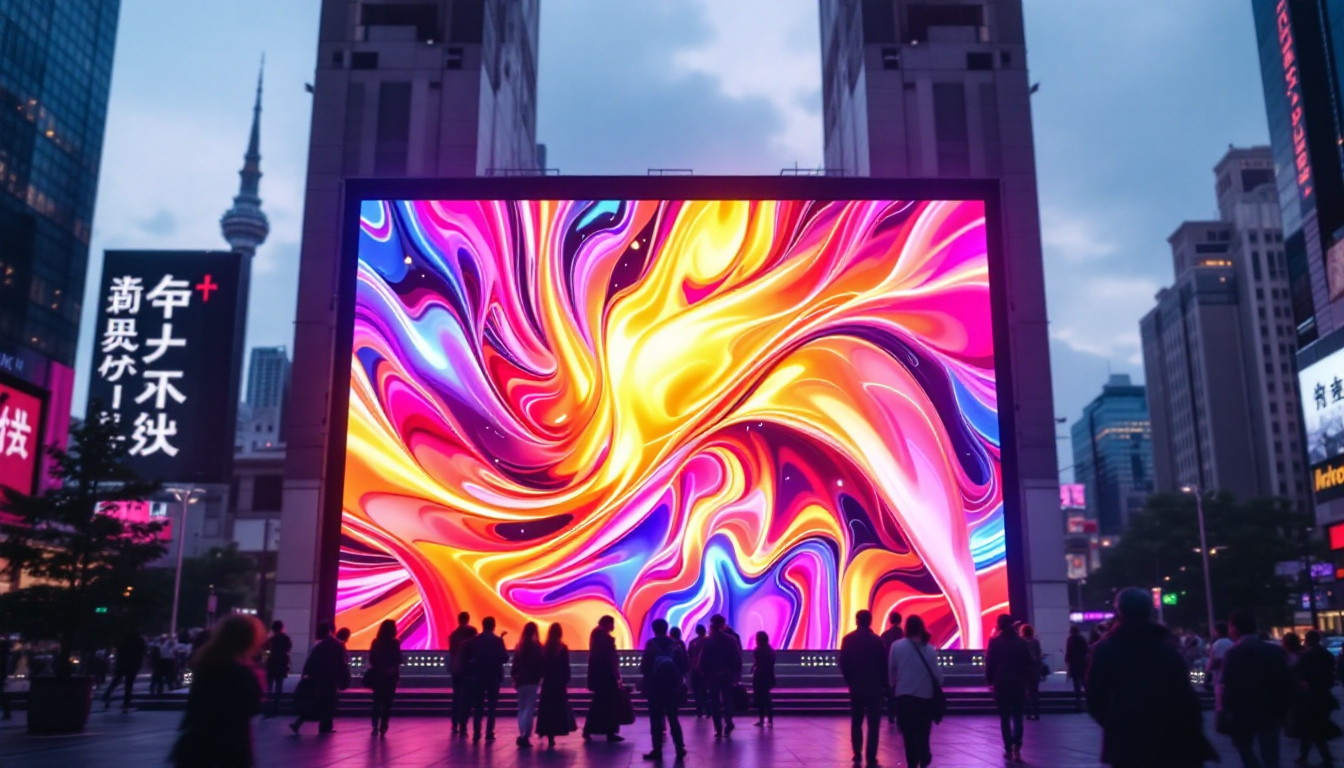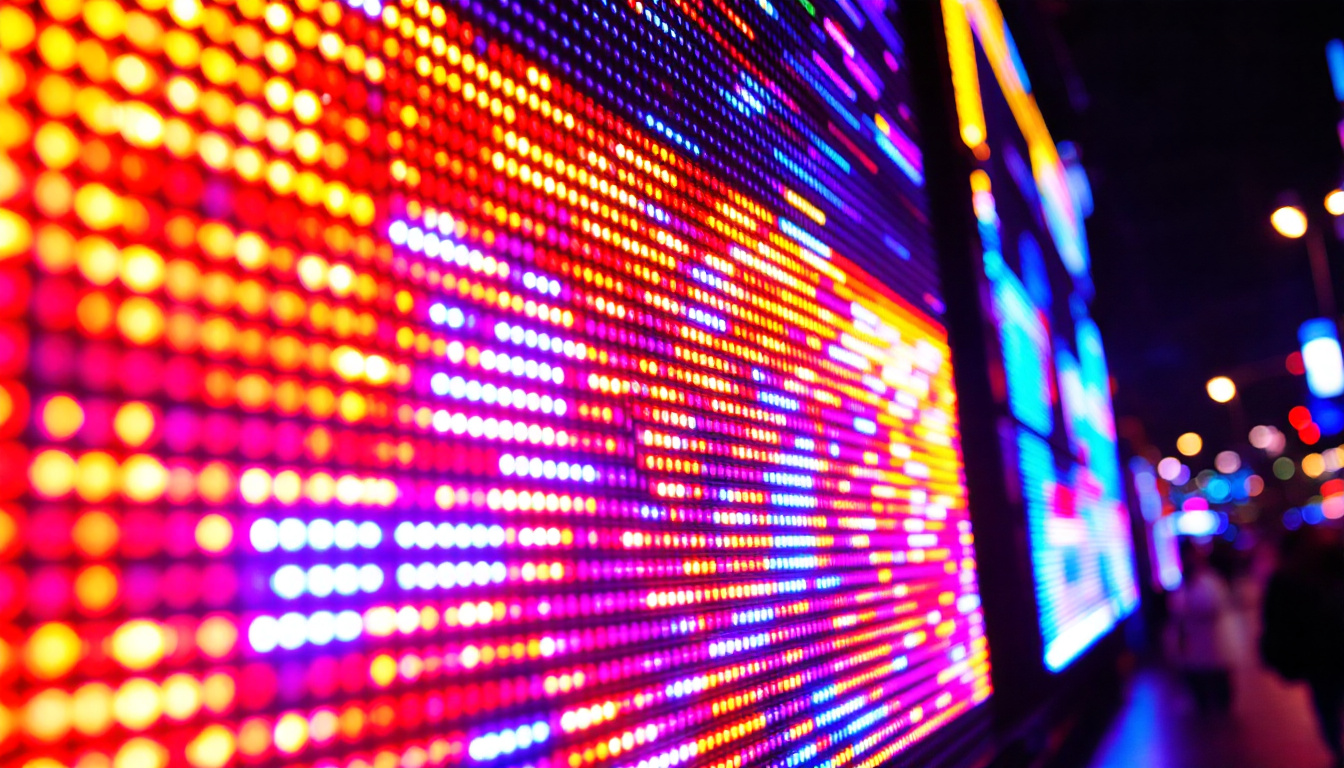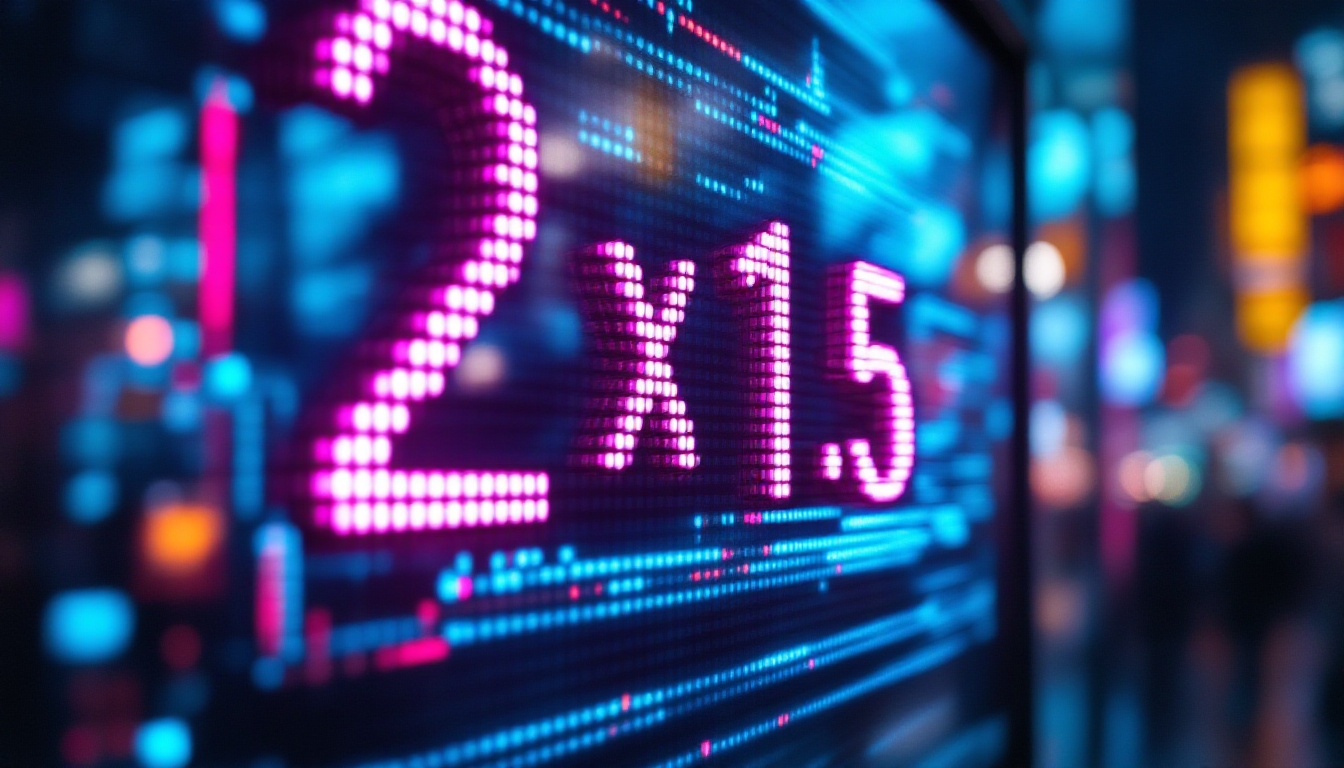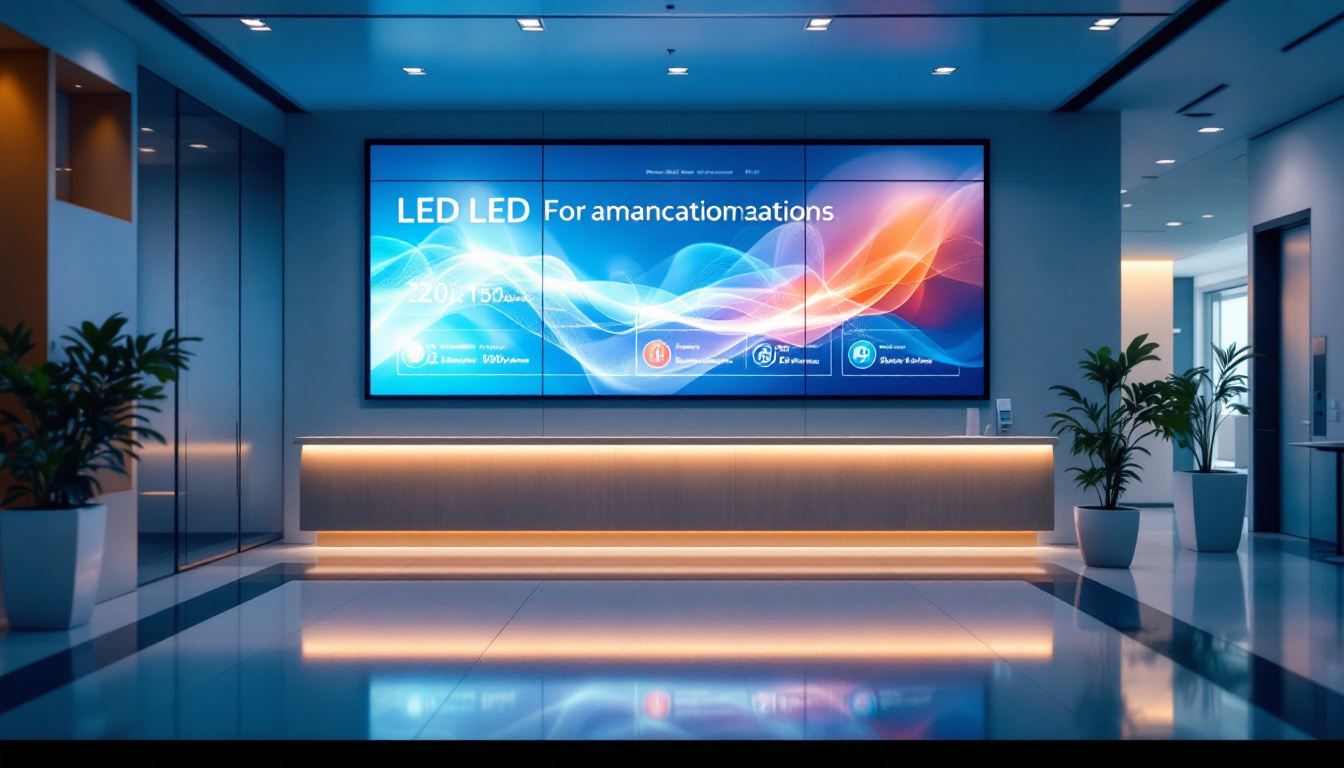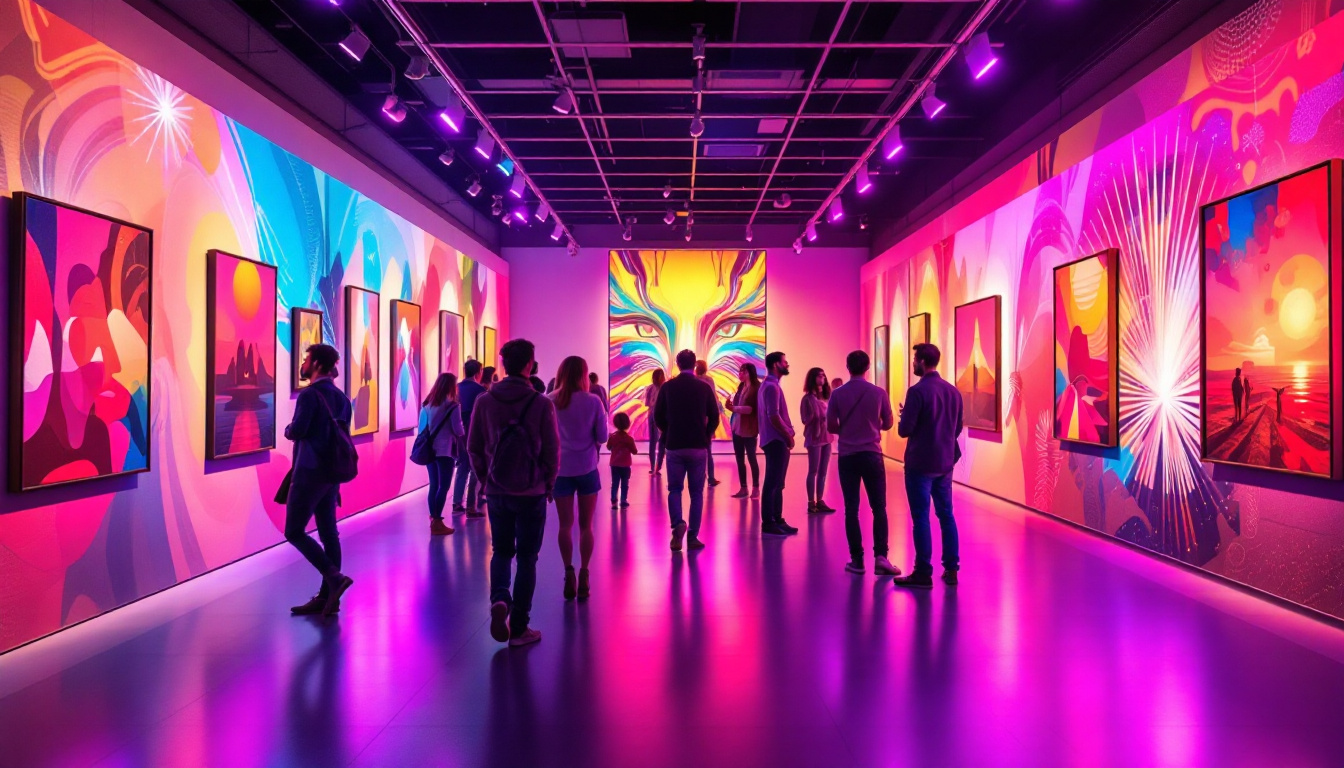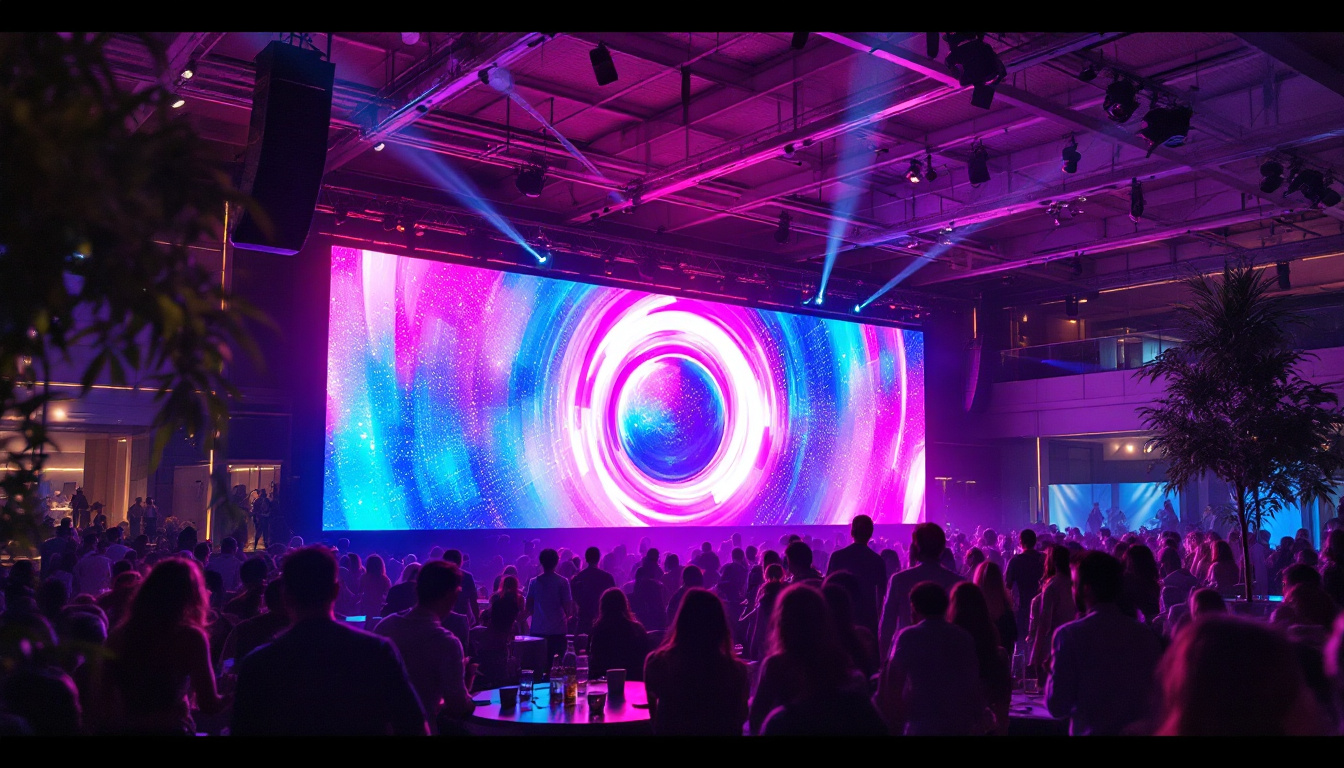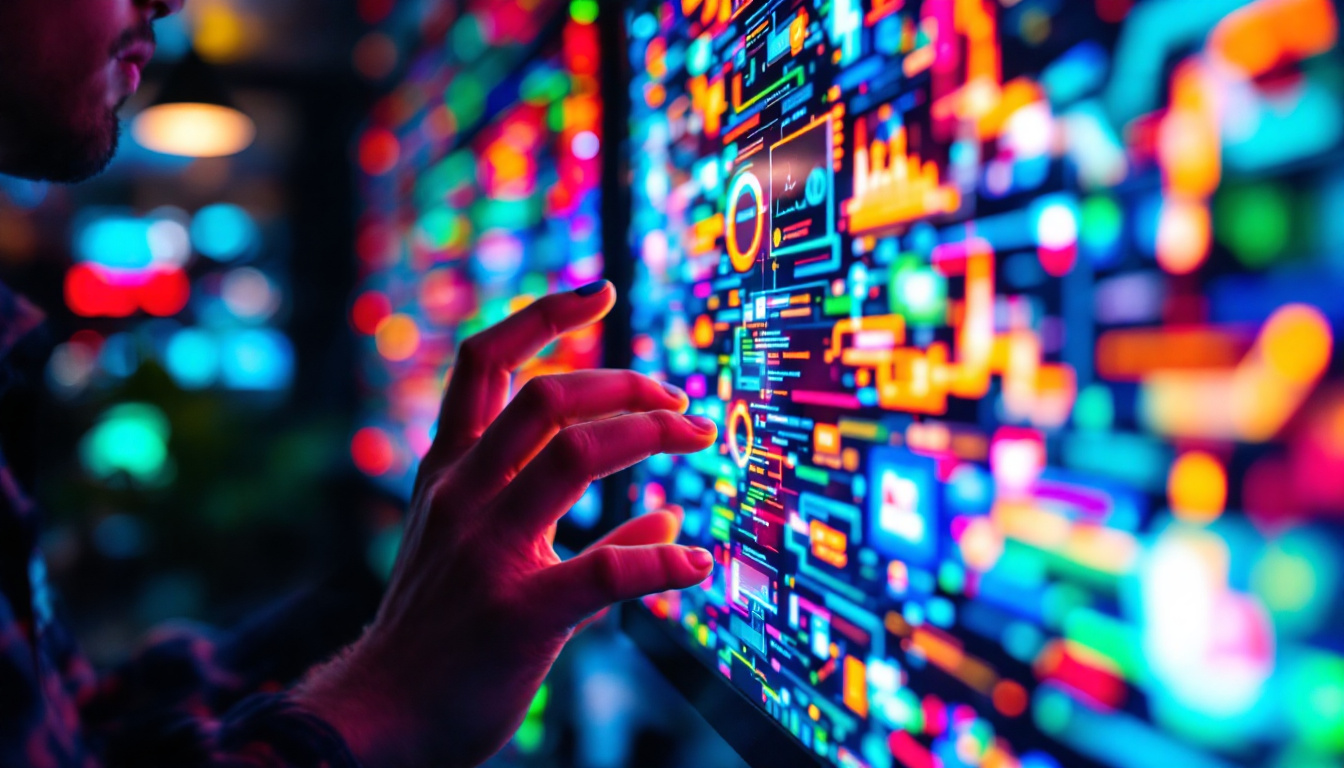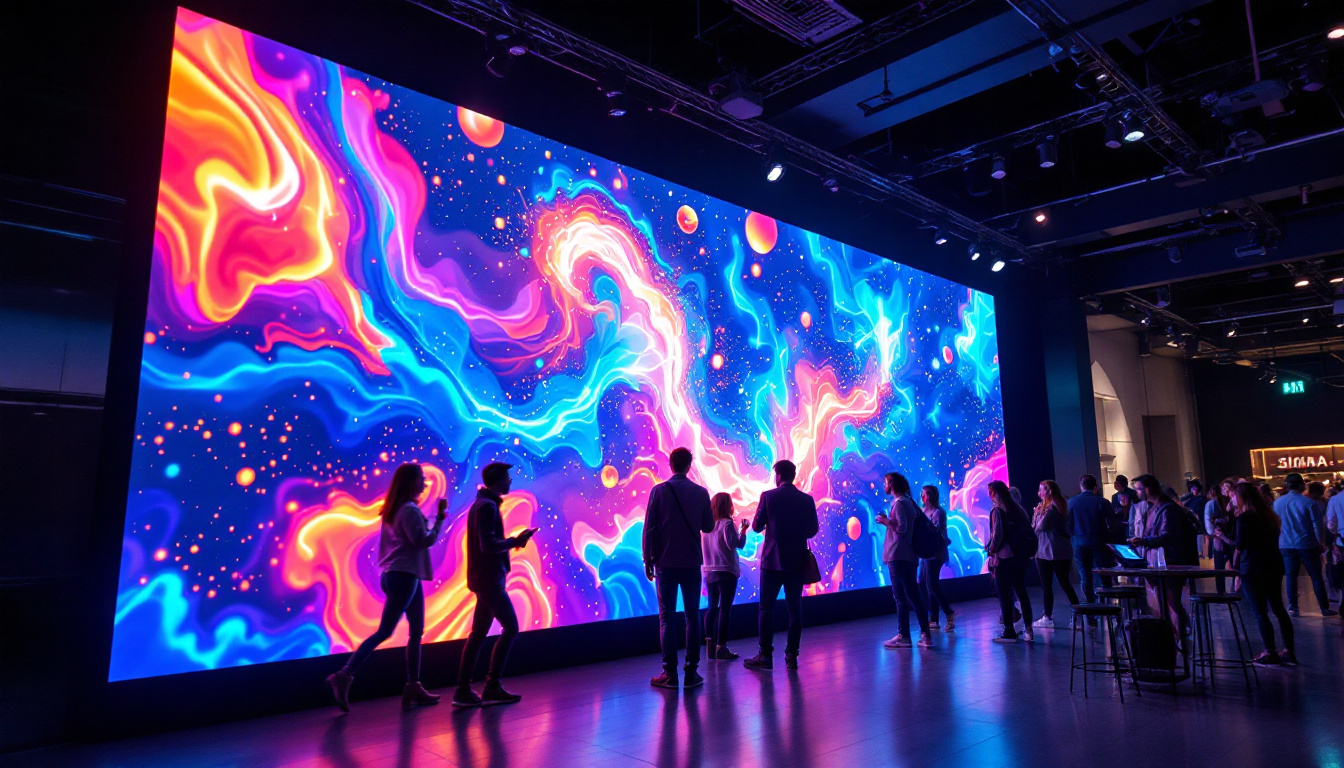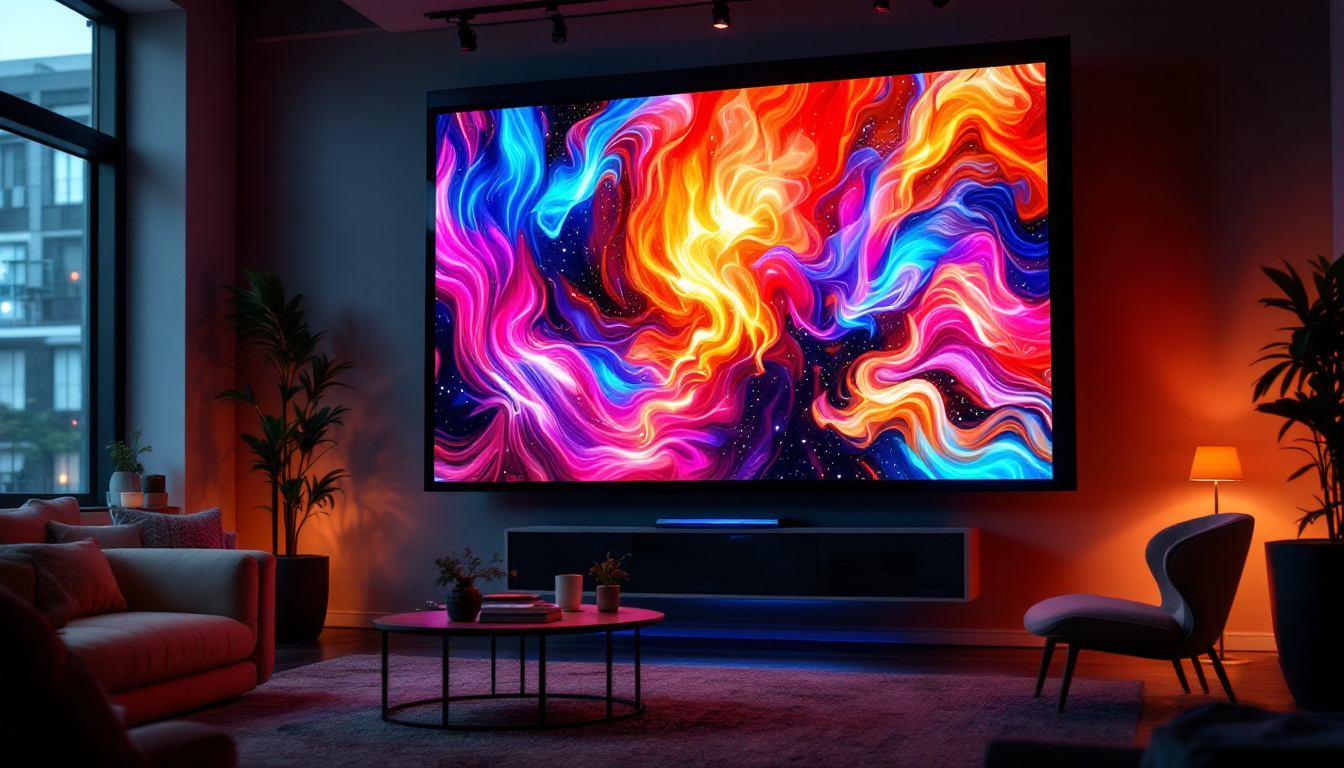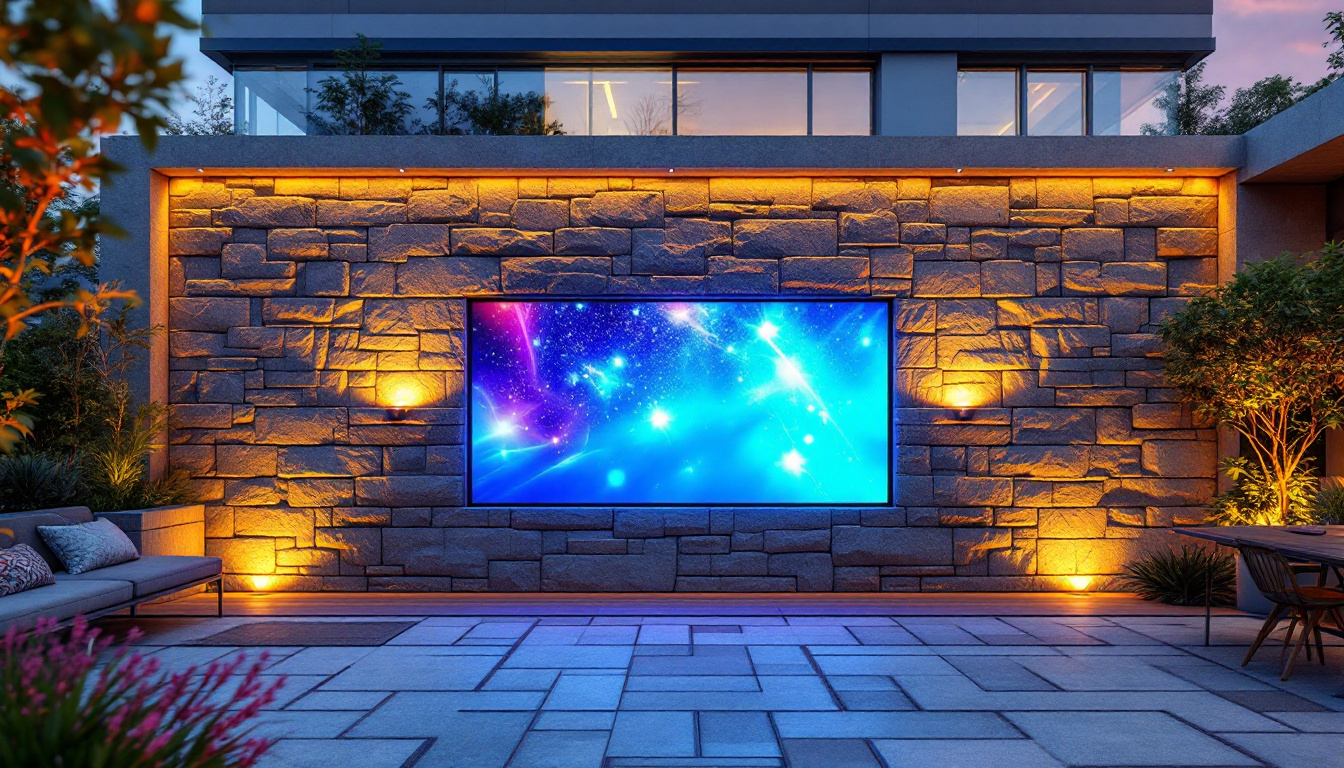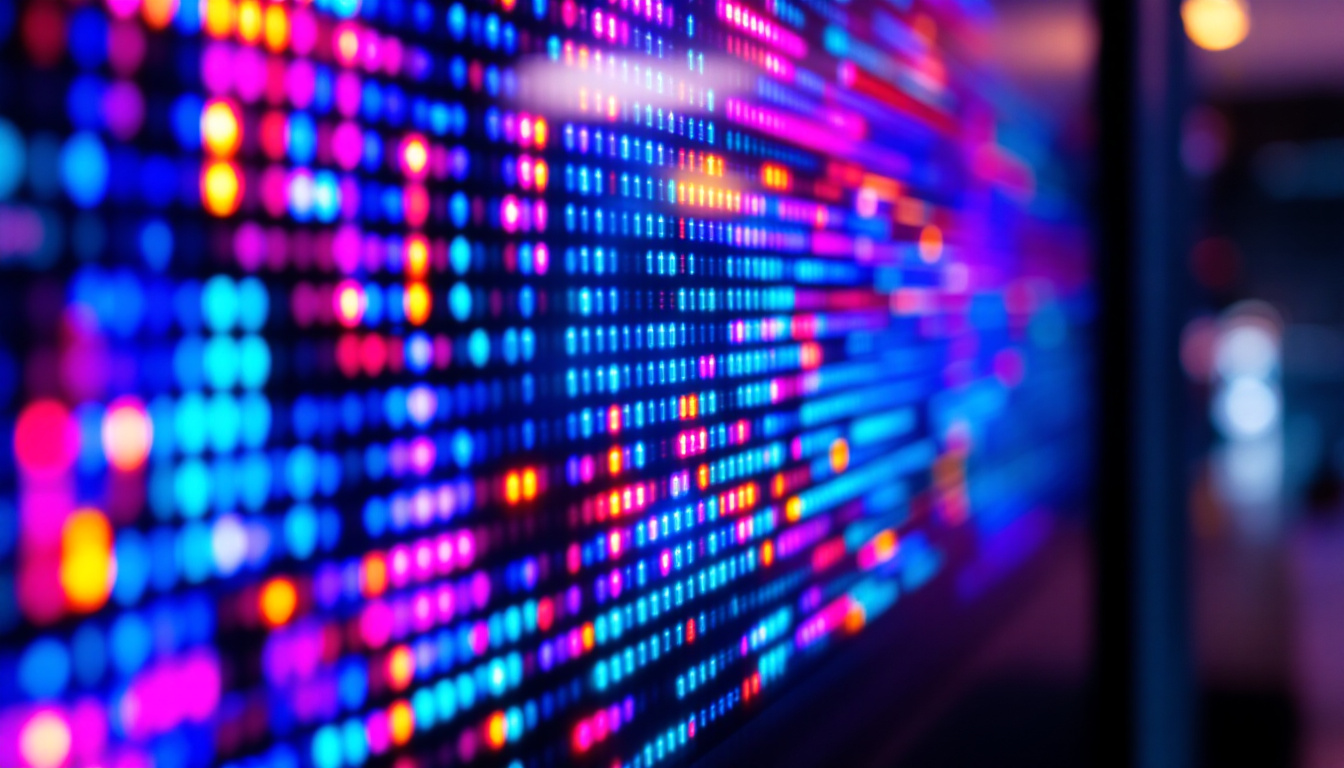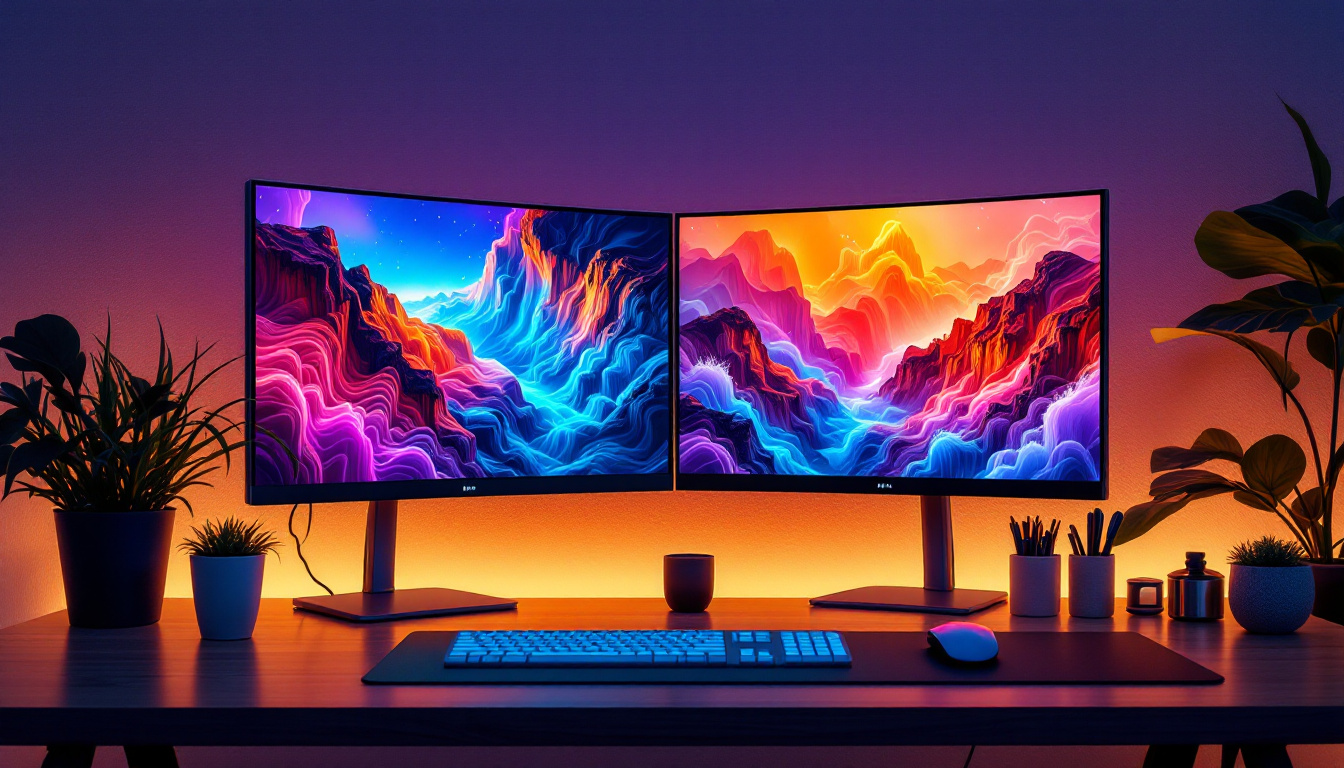In today’s fast-paced digital world, the demand for high-quality visual displays has surged. Among the various technologies available, LED (Light Emitting Diode) displays have emerged as a popular choice for both personal and professional use. This article delves into the intricacies of LED displays, exploring their features, benefits, and applications in various fields.
Understanding LED Display Technology
LED displays utilize semiconductor technology to emit light when an electric current passes through them. This fundamental principle underpins their functionality and sets them apart from traditional display technologies such as LCD and CRT. LED displays can be categorized into two main types: direct view and rear projection.
Direct View LED Displays
Direct view LED displays consist of an array of individual LEDs that create images by lighting up in various colors and intensities. These displays are known for their vibrant colors and high brightness levels, making them suitable for outdoor environments where visibility is crucial.
One of the primary advantages of direct view LED displays is their ability to maintain image quality in bright sunlight. This characteristic makes them ideal for advertising billboards, stadium screens, and other applications where visibility is paramount. Additionally, the modular design of direct view LED displays allows for easy scalability, enabling businesses to create large video walls or custom shapes tailored to their specific needs. This adaptability has led to their widespread adoption in various sectors, from retail to entertainment, where dynamic visual content can significantly enhance audience engagement.
Rear Projection LED Displays
Rear projection LED displays, on the other hand, utilize a combination of LED light sources and projection technology. These displays are often used in environments where space is limited, as they can project large images without requiring significant depth. They are commonly found in conference rooms, control rooms, and home theaters.
The rear projection method allows for larger screen sizes without the bulkiness of traditional projection systems. This flexibility has made them increasingly popular in professional settings where space efficiency is a priority. Moreover, advancements in optical technology have improved the image quality of rear projection displays, providing sharper and more vibrant visuals. This makes them an excellent choice for presentations or collaborative work, where clarity and detail are essential. Furthermore, many rear projection systems now incorporate interactive features, allowing users to engage with the content in real-time, thereby enhancing the overall experience in educational and corporate environments.
Key Features of LED Displays
LED displays come equipped with a myriad of features that enhance their usability and performance. Understanding these features can help users select the right display for their specific needs.
Brightness and Color Accuracy
One of the standout features of LED displays is their exceptional brightness. With the ability to reach high lumens, these displays can deliver clear and vivid images even in well-lit environments. This is particularly beneficial for outdoor applications, as mentioned earlier. For instance, in settings like sports stadiums or outdoor advertising, the brightness ensures that messages are visible from a distance, capturing the attention of passersby and enhancing viewer engagement.
Moreover, LED displays offer impressive color accuracy. The technology allows for a wide color gamut, ensuring that images are displayed as intended. This feature is crucial for professionals in fields such as graphic design, photography, and video production, where color fidelity is paramount. The ability to reproduce colors with precision means that artists and creators can trust that their work will be showcased in the best possible light, making LED displays a preferred choice in creative industries.
Energy Efficiency
In an era where energy consumption is a growing concern, LED displays shine as a more energy-efficient option compared to traditional display technologies. They consume significantly less power, which not only reduces electricity costs but also contributes to a smaller carbon footprint. This aspect is increasingly important for businesses looking to adopt sustainable practices, as using LED technology can be a step towards greener operations.
Furthermore, the longevity of LED displays adds to their energy efficiency. With a lifespan that can exceed 50,000 hours, users can enjoy prolonged use without the need for frequent replacements, further enhancing their cost-effectiveness. This durability means less waste and fewer resources spent on manufacturing and disposal, aligning with the principles of sustainability. Additionally, many LED displays come with features such as automatic brightness adjustment, which optimizes energy use based on ambient light conditions, making them even more efficient in varying environments.
Applications of LED Displays
LED displays have found their way into a diverse range of applications, showcasing their versatility and effectiveness. From advertising to entertainment, the following sections explore some of the most common uses of LED technology.
Advertising and Marketing
One of the most prominent applications of LED displays is in the advertising sector. Digital billboards and signage have transformed the way brands communicate with their audiences. The ability to display dynamic content, such as videos and animations, allows advertisers to capture attention more effectively than static displays.
Additionally, LED displays can be easily updated remotely, making them a flexible solution for businesses looking to promote new products or services. This adaptability is particularly advantageous in fast-paced markets where timely information is crucial. Moreover, LED technology allows for targeted advertising, enabling businesses to tailor their messages based on the time of day or specific demographics, thus maximizing their marketing efforts and return on investment.
Events and Entertainment
In the world of events and entertainment, LED displays play a pivotal role in enhancing the audience experience. Concerts, festivals, and sporting events often utilize large LED screens to provide spectators with an immersive visual experience.
These displays can be configured in various shapes and sizes, allowing for creative installations that enhance the overall ambiance of an event. Whether it’s a massive screen at a music festival or a sleek display at a corporate event, LED technology has become synonymous with modern entertainment. Furthermore, the integration of LED displays with sound systems and lighting effects creates a cohesive sensory experience, captivating audiences and elevating the overall production quality to new heights.
Corporate and Educational Settings
In corporate environments, LED displays are increasingly used for presentations, training sessions, and meetings. Their high visibility and clarity make them ideal for conveying information to large groups. Additionally, many organizations utilize LED video walls to create engaging visual presentations that captivate audiences.
In educational settings, LED displays are becoming a staple in classrooms and auditoriums. They facilitate interactive learning experiences, enabling educators to present multimedia content in an engaging manner. This technology not only enhances the learning environment but also encourages student participation. Beyond traditional teaching, LED displays can be used for virtual classrooms and online learning platforms, bridging the gap between remote and in-person education. This adaptability ensures that students receive a comprehensive and engaging educational experience, regardless of their location.
Choosing the Right LED Display
Selecting the right LED display can be a daunting task, given the multitude of options available on the market. Several factors should be considered to ensure that the chosen display meets specific needs and requirements.
Screen Size and Resolution
The first consideration when choosing an LED display is the screen size. The size should be determined based on the intended use and viewing distance. For example, larger displays are ideal for outdoor advertising, while smaller screens may suffice for personal or small group use.
Resolution is another critical factor. Higher resolution displays offer sharper images and finer details, making them suitable for applications where image quality is paramount. For professional use, a display with at least Full HD (1920×1080) resolution is recommended, while 4K (3840×2160) displays are becoming increasingly popular for high-end applications.
Indoor vs. Outdoor Use
Understanding the intended environment for the LED display is essential. Indoor displays typically have lower brightness levels compared to outdoor displays, which need to be significantly brighter to combat sunlight and ambient light. Outdoor displays also require additional weatherproofing and durability features to withstand the elements.
Choosing the right display for the right environment ensures optimal performance and longevity, making it a crucial consideration for potential buyers.
Future Trends in LED Display Technology
The LED display market is continually evolving, with technological advancements paving the way for new possibilities. As industries demand higher performance and more innovative solutions, several trends are emerging in the LED display landscape.
MicroLED Technology
MicroLED technology is one of the most exciting developments in the LED display sector. This technology utilizes microscopic LEDs to create displays with unparalleled resolution and color accuracy. MicroLED displays promise to deliver superior performance while being thinner and lighter than traditional LED displays.
As this technology matures, it is expected to find applications in various fields, from consumer electronics to large-scale commercial displays, revolutionizing how visual content is presented.
Flexible and Transparent Displays
Another trend gaining traction is the development of flexible and transparent LED displays. These displays can be bent or curved, allowing for creative installations that were previously impossible. Transparent displays, on the other hand, enable new possibilities for advertising and information sharing in retail environments.
As manufacturers continue to innovate, the potential for flexible and transparent displays is vast, opening up new avenues for design and functionality.
Conclusion
LED displays have become an integral part of modern visual communication, offering a blend of versatility, efficiency, and performance. Their applications span various industries, from advertising to education, making them a valuable asset in any professional setting.
As technology continues to advance, the future of LED displays looks promising, with innovations such as MicroLED and flexible displays on the horizon. Understanding the features, benefits, and applications of LED displays is essential for making informed decisions, whether for personal use or professional endeavors.
In summary, LED displays are not just a trend; they represent a significant shift in how information is conveyed visually. Embracing this technology can lead to enhanced communication, engagement, and creativity in an increasingly digital world.
Discover Cutting-Edge LED Displays with LumenMatrix
Ready to elevate your visual communication with the latest in LED display technology? Look no further than LumenMatrix, a pioneer in crafting LED display modules that bring your brand to life. Whether you’re in need of an Indoor LED Wall Display for your corporate events, an Outdoor LED Wall Display to captivate passersby, or any of our specialized solutions like Vehicle LED Displays, LED Sports Displays, or Custom LED Displays, LumenMatrix has you covered. Our mission is to transform your visual storytelling with digital signage that engages and impresses. Don’t miss out on the opportunity to make a lasting impression. Check out LumenMatrix LED Display Solutions today and start creating unforgettable visual experiences.

